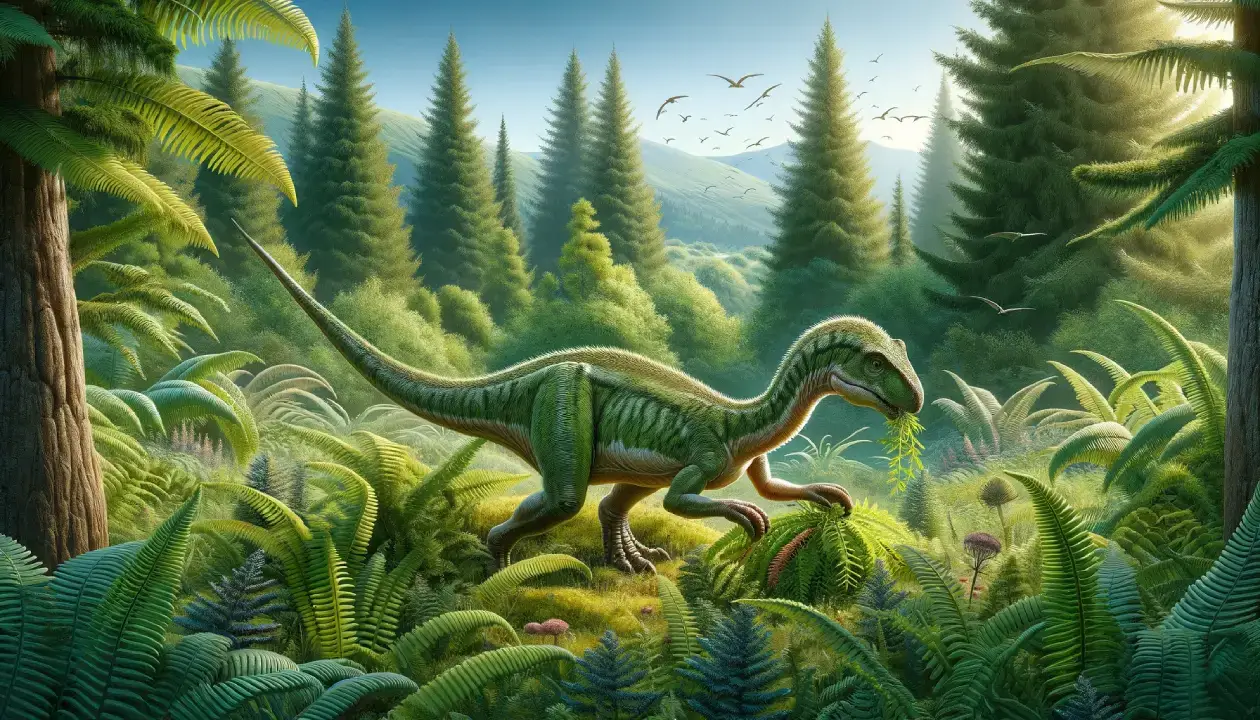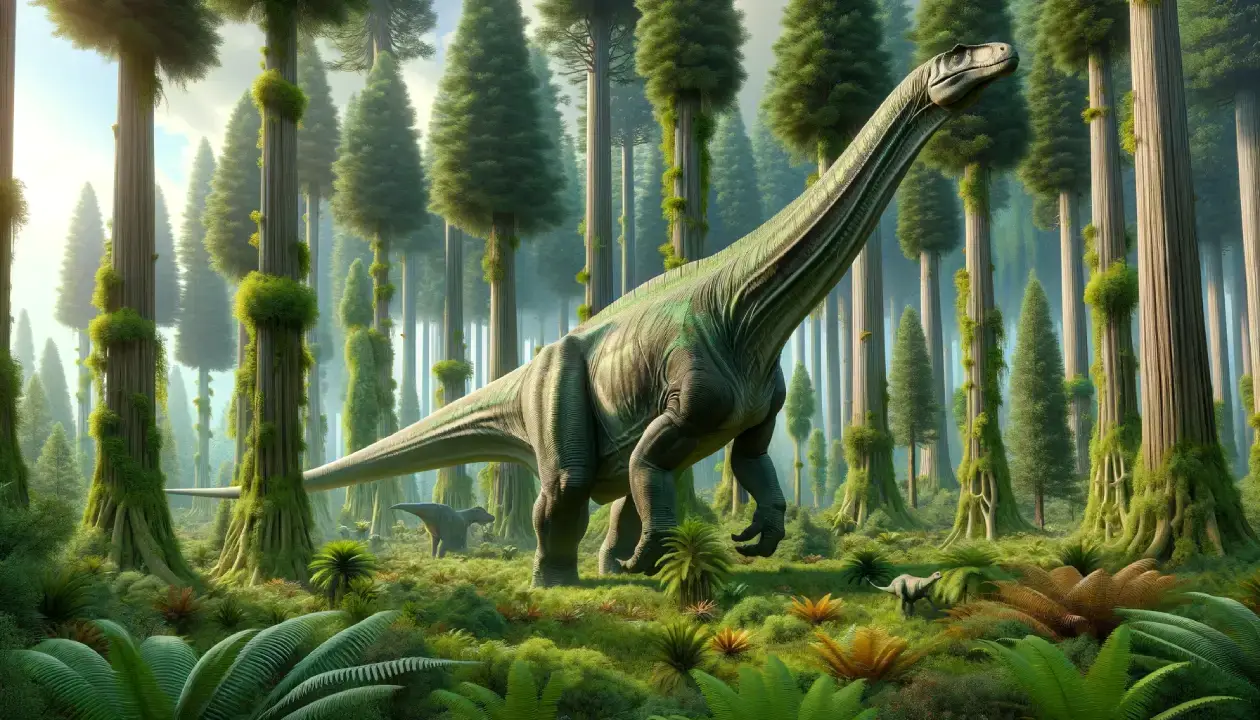Spinosaurus was a huge carnivorous dinosaur that lived in what is now North Africa during the Late Cretaceous period, about 99 to 93.5 million years ago. It is the largest known meat-eating dinosaur, and the only one that is thought to have lived partly in water. It had a long, narrow skull with conical teeth, a sail-like structure on its back, and a paddle-like tail.
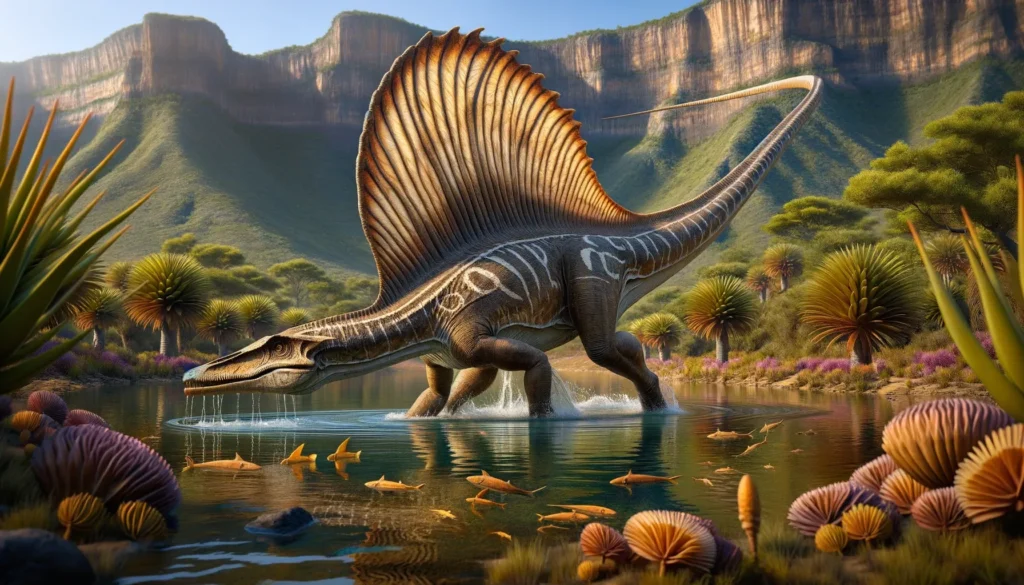
Basic Information
| Feature | Details |
|---|---|
| Time Period | Late Cretaceous |
| Diet | Carnivore |
| Length | 14–18 meters (46–59 feet) |
| Weight | 12,000–20,000 kilograms (13–22 tons) |
| Size | Gigantic |
| Posture | Bipedal |
| Locations | Egypt, Morocco, Algeria |
| Continent | Africa |
| Type | Theropod |
| Habitats | Rivers and Lakes, Lagoons and Shallow Seas |
Description of Spinosaurus
Historical Context
Spinosaurus was first discovered in Egypt in 1912 by German paleontologist Ernst Stromer. He named it Spinosaurus aegyptiacus, meaning “spine lizard from Egypt”. He described it based on a partial skeleton that included parts of the skull, spine, ribs, pelvis, and limbs. Unfortunately, these fossils were destroyed during World War II when a British bombing raid hit the museum where they were stored. For many years, Spinosaurus was known only from Stromer’s drawings and notes.
In the early 21st century, new fossils of Spinosaurus were found in Morocco and Algeria. These fossils revealed more details about the dinosaur’s anatomy and lifestyle. They also suggested that there might be more than one species of Spinosaurus, such as Spinosaurus maroccanus from Morocco. However, this is still debated by some scientists. Another possible relative of Spinosaurus is Oxalaia from Brazil, but it is also poorly known.
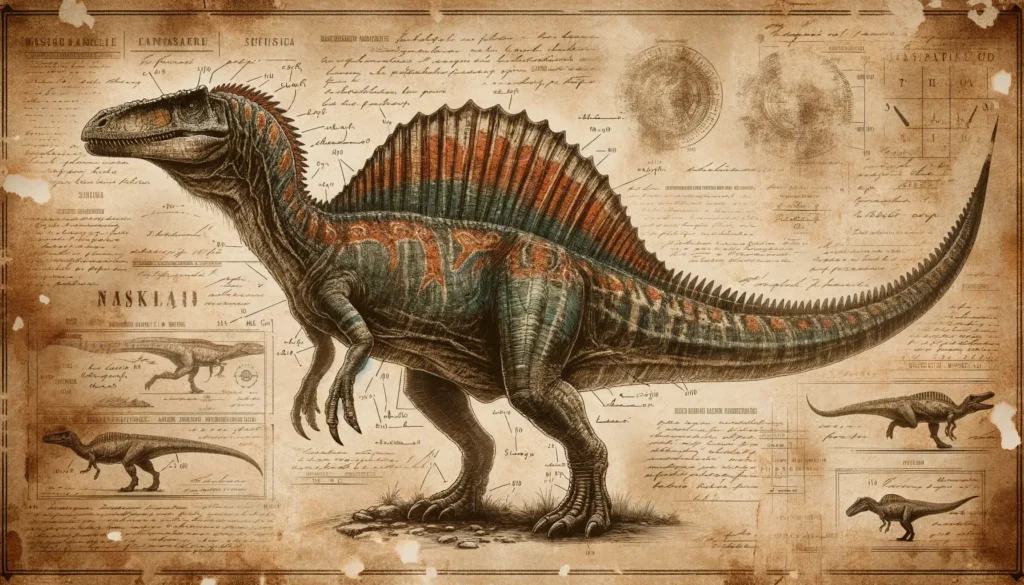
Physical Attributes
Spinosaurus was a massive dinosaur that rivaled or exceeded Tyrannosaurus rex in size. It had a long, low, and narrow skull that resembled that of a crocodile. It had straight, conical teeth that were adapted for catching fish and other aquatic prey. It had large nostrils that were located near the middle of its snout, which may have helped it breathe while partially submerged.
Spinosaurus had powerful forelimbs with three-fingered hands. The first finger had an enlarged claw that could be used for slashing or grasping. The hindlimbs were shorter and weaker than the forelimbs, giving Spinosaurus a sloping posture. The feet had four toes each, with webbing between them.
The most distinctive feature of Spinosaurus was its sail-like structure on its back. This was formed by long neural spines that extended from the vertebrae along the neck, back, and tail. The spines could reach up to 1.65 meters (5.4 feet) in height. They were likely covered by skin or other soft tissue, forming a sail or a hump. The function of this structure is still uncertain, but it may have been used for thermoregulation, display, or storage.
Another unique feature of Spinosaurus was its tail. Unlike most other theropods, which had stiff and straight tails, Spinosaurus had a flexible and deepened tail that resembled a fin or a paddle. The tail had tall and thin neural spines and elongated chevrons that supported the tail muscles. The tail shape would have allowed Spinosaurus to swim more efficiently and generate more thrust in water.
Feeding Habits
Spinosaurus was a carnivore that ate both terrestrial and aquatic animals. It had a varied diet that included fish, sharks, turtles, crocodiles, pterosaurs, and smaller dinosaurs. It may have also scavenged on carcasses of larger dinosaurs.
Spinosaurus was adapted for hunting in water as well as on land. It had long jaws with interlocking teeth that could grip slippery prey. It had nostrils that were positioned high on its snout, which enabled it to breathe while partially submerged. It had eyes that faced forward, giving it binocular vision and depth perception.
Spinosaurus may have used different strategies to catch its prey depending on the environment and the availability of food. It may have ambushed its prey from underwater like a crocodile, using its powerful tail to propel itself forward. It may have also chased its prey on land using its strong forelimbs and claws to slash or grab them. It may have also used its sail or hump to intimidate or attract its prey.
Unique Features
Spinosaurus had several unique features that distinguished it from other theropods and made it one of the most unusual dinosaurs ever discovered. Some of these features are:
- Its sail or hump on its back, which was formed by long neural spines that could reach up to 1.65 meters (5.4 feet) in height. The function of this structure is still unknown, but it may have been used for thermoregulation, display, or storage.
- Its paddle-like tail, which was flexible and deepened by tall and thin neural spines and elongated chevrons. The tail shape would have made Spinosaurus an efficient swimmer and a powerful predator in water.
- Its semiaquatic lifestyle, which was supported by its crocodile-like skull, conical teeth, high nostrils, webbed feet, and aquatic prey. Spinosaurus is the first known dinosaur that is thought to have lived partly in water.
Movement and Speed
Spinosaurus was a bipedal dinosaur that walked on two legs. However, its legs were shorter and weaker than those of other theropods, giving it a sloping posture. Its center of gravity was shifted forward by its heavy skull and forelimbs. This may have affected its balance and stability on land.
Spinosaurus was not a fast runner compared to other theropods. It may have reached speeds of up to 24 kilometers per hour (15 miles per hour) on land, but this is still uncertain. It may have relied more on its strength and size than its speed to catch its prey.
Spinosaurus was a better swimmer than a runner. It had a paddle-like tail that could generate more thrust and efficiency in water than the tail shapes of terrestrial dinosaurs. It also had webbed feet that could help it maneuver in water. It may have reached speeds of up to 40 kilometers per hour (25 miles per hour) in water, but this is also uncertain.
Cultural Impact
Spinosaurus has had a significant cultural impact since its discovery. It has been featured in many books, films, games, and toys as one of the most popular and recognizable dinosaurs. Some of the most notable examples are:
- The film Jurassic Park III (2001), where Spinosaurus is the main antagonist and fights with Tyrannosaurus rex.
- The documentary Planet Dinosaur (2011), where Spinosaurus is shown as a semiaquatic predator that hunts fish and other dinosaurs.
- The video game Jurassic World Evolution (2018), where Spinosaurus is one of the playable dinosaurs that can be created and managed by the player.
Spinosaurus has also inspired scientific research and public interest in paleontology. It has been the subject of many studies and debates about its anatomy, lifestyle, and evolution. It has also attracted many visitors to museums and exhibitions where its fossils or replicas are displayed.
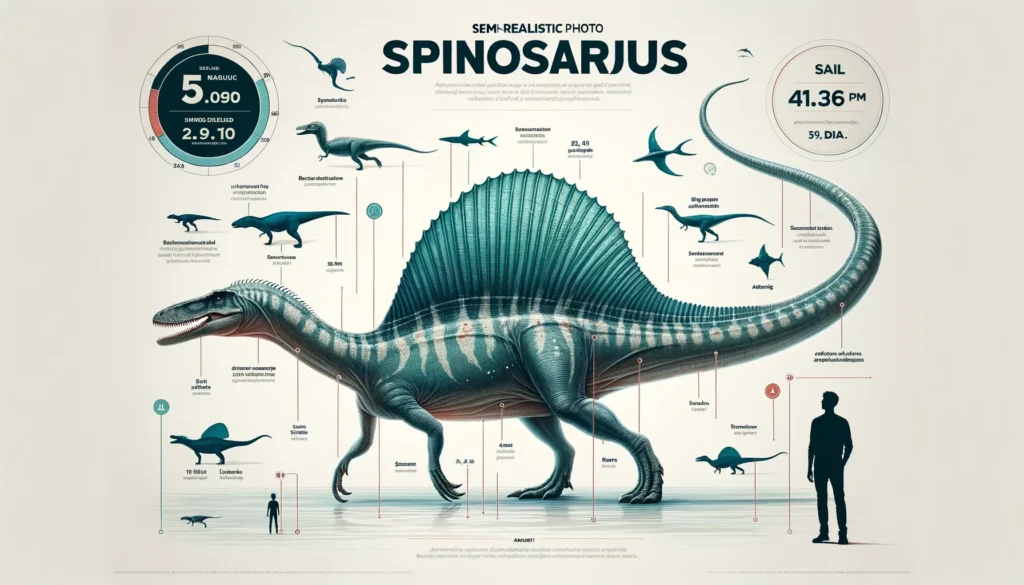
Interesting Facts
Here are some interesting facts about Spinosaurus:
- Spinosaurus means “spine lizard” because of the sail or hump on its back.
- Spinosaurus is the largest known carnivorous dinosaur, bigger than Tyrannosaurus rex or Giganotosaurus.
- Spinosaurus is the only known dinosaur that is thought to have lived partly in water.
Related Dinosaurs
Some of the dinosaurs that are related to Spinosaurus are:
- Baryonyx, a smaller spinosaurid from England that also had a long snout and a large claw on its hand.
- Suchomimus, another spinosaurid from Africa that resembled Baryonyx but had longer neural spines on its back.
- Irritator, a spinosaurid from Brazil that had a slender skull with a tall crest on its snout.






